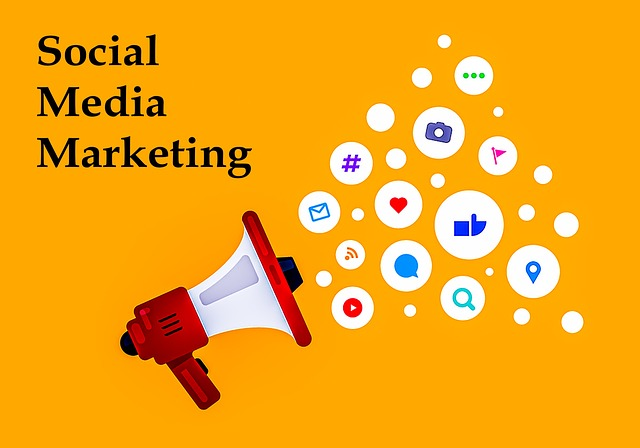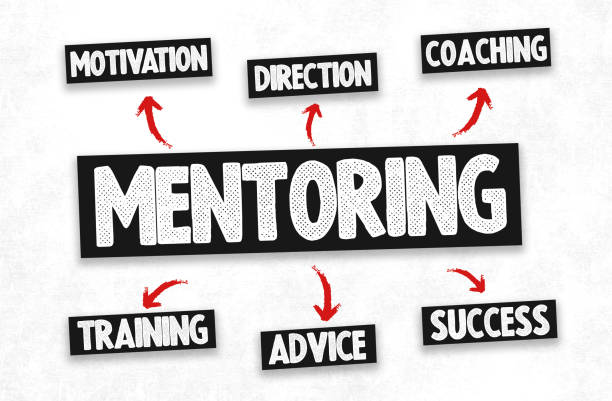Table of Contents Show
Monetization of Social Media: Unlocking Revenue Streams in the Digital Age
In the rapidly evolving digital landscape, social media has emerged as a powerful platform for communication, entertainment, and business. With billions of users engaging daily, the potential for monetizing social media channels is immense. Businesses and individuals alike are exploring diverse ways to generate income from these platforms. In this article, we’ll delve into various strategies for monetizing social media, highlighting key methods and Google keywords to enhance your understanding and SEO performance.
1. Influencer Marketing

Influencer Marketing: A Key Driver of Social Media Monetization
Influencer marketing has emerged as a vital component of social media monetization, enabling brands to tap into the vast reach and credibility of influencers. These individuals possess substantial and engaged followings, making them ideal partners for promoting products or services.
Benefits of Influencer Marketing:
- Credibility: Influencers have built trust with their audience, making their endorsements more impactful.
- Reach: Influencers have a large and engaged following, expanding brand visibility.
- Targeted audience: Brands can select influencers whose audience aligns with their target market.
- Measurable ROI: Influencer marketing campaigns can be tracked, allowing businesses to measure their return on investment.
Platforms for Influencer Marketing:
- Instagram: Visual-centric platform ideal for product showcases and lifestyle influencer partnerships.
- YouTube: Long-form content platform suitable for in-depth product reviews and tutorials.
- TikTok: Short-form video platform perfect for reaching a younger audience.
- Twitter: Real-time engagement platform for influencer takeovers and product launches.
- Twitch: Live streaming platform for gaming and esports influencer partnerships.
- Blogging: Long-form content platform for in-depth product reviews and tutorials.
Strategies for Effective Influencer Marketing:
- Choose influencers who align with your brand values and target audience.
- Set clear campaign objectives and metrics for success.
- Collaborate with influencers to create engaging content.
- Monitor and measure campaign performance.
- Build long-term relationships with influencers.
By leveraging influencer marketing, businesses can achieve significant ROI, increase brand awareness, and drive sales. By selecting the right influencers and platforms, brands can maximize their reach and credibility, making influencer marketing a cornerstone of their social media monetization strategy.”
2. Sponsored Content

Sponsored Content: A Powerful Marketing Tool
Sponsored content is a form of advertising where brands partner with creators to produce and share content that promotes their products or services. This can take many forms, including:
- Social media posts: Sponsored posts on Instagram, Facebook, Twitter, and LinkedIn.
- YouTube videos: Product reviews, tutorials, and unboxing videos.
- Blog posts: Sponsored articles and product reviews on blogs and websites.
- Podcast episodes: Sponsored segments or entire episodes.
- Influencer takeovers: Brands partner with influencers to take over their social media accounts.
Platforms for Sponsored Content:
- Instagram: Sponsored posts, stories, and reels.
- YouTube: Video sponsorships and product placements.
- TikTok: Branded hashtag challenges and sponsored videos.
- Twitter: Sponsored tweets and Twitter chats.
- Facebook: Sponsored posts and Facebook Live streams.
- LinkedIn: Sponsored posts and LinkedIn Live streams.
- Blogging platforms: Sponsored articles and product reviews.
- Podcasting platforms: Sponsored episodes and segments.
Best Practices for Sponsored Content:
- Maintain authenticity: Ensure sponsored content aligns with your audience’s interests.
- Disclose sponsorships: Clearly indicate sponsored content with #ad, #sponsored, or #partner.
- Follow platform guidelines: Adhere to each platform’s rules and regulations.
- Create engaging content: Produce high-quality content that resonates with your audience.
- Monitor and measure performance: Track engagement and adjust your strategy accordingly.
Benefits of Sponsored Content:
- Increased brand awareness
- Improved credibility
- Targeted reach
- Measurable ROI
- Authentic connections with your audience
By following these best practices and leveraging various platforms, creators can produce effective sponsored content that resonates with their audience and drives results for brands.”
3. Affiliate Marketing

Affiliate Marketing: A Lucrative Opportunity for Social Media Creators
Affiliate marketing is a performance-based marketing model that allows social media users to earn commissions by promoting products and driving sales through unique affiliate links. By partnering with brands, influencers, and content creators can recommend products they genuinely use and love, earning a commission for each sale made through their unique link.
Benefits of Affiliate Marketing:
- Monetize your influence: Earn commissions by promoting products you love.
- Authentic endorsements: Recommend products that align with your values and audience interests.
- Low risk, high reward: No upfront costs, and earn commissions for each sale.
- Diversified income streams: Supplement your income with affiliate marketing.
Platforms for Affiliate Marketing:
- Instagram: Share affiliate links in bio, stories, or posts.
- YouTube: Include affiliate links in video descriptions or cards.
- Blogging: Embed affiliate links within blog posts or product reviews.
- TikTok: Share affiliate links in bio or through branded hashtag challenges.
- Twitter: Share affiliate links in tweets or Twitter threads.
- Pinterest: Share affiliate links on pins or boards.
- Podcasting: Share affiliate links in episode descriptions or audio ads.
- Email marketing: Share affiliate links with your email list.
Best Practices for Affiliate Marketing:
- Disclose affiliate relationships: Clearly indicate affiliate links with #ad, #affiliate, or #sponsored.
- Choose relevant products: Promote products that align with your audience’s interests.
- Create engaging content: Produce high-quality content that resonates with your audience.
- Build trust: Only promote products you genuinely use and love.
- Track and optimize: Monitor performance and adjust your strategy accordingly.
Popular Affiliate Programs:
- Amazon Associates
- ShareASale
- ClickBank
- Commission Junction
- Rakuten
By leveraging affiliate marketing on various platforms and following best practices, social media creators can earn significant commissions and build a loyal audience.”
4. Selling Products and Services

Social Commerce: Selling Products and Services Directly on Social Media
Social commerce is a growing monetization strategy that involves directly selling products and services on social media platforms. With the rise of e-commerce and social media, businesses can now leverage platforms like Instagram, Facebook, and Pinterest to set up virtual storefronts and reach a vast customer base.
Platforms for Social Commerce:
- Instagram Shopping: Tag products in posts and stories, and enable customers to purchase from your feed.
- Facebook Shop: Create a virtual storefront and sell products directly on Facebook.
- Pinterest Shopping: Tag products in pins and enable customers to purchase from your boards.
- TikTok Shop: Sell products directly on TikTok through branded hashtag challenges and shopping carts.
- YouTube Shopping: Tag products in videos and enable customers to purchase from your channel.
- Twitter Shopping: Sell products directly on Twitter through shopping carts and product links.
- Snapchat Shopping: Sell products directly on Snapchat through shopping carts and product links.
Benefits of Social Commerce:
- Increased conversions: Facilitate seamless purchases within the app.
- Improved customer experience: Engage customers through interactive live sessions and stories.
- Reduced cart abandonment: Minimize friction and make purchasing easier.
- Enhanced brand awareness: Showcase products and build brand identity.
Best Practices for Social Commerce:
- High-quality product images: Showcase products in a lifestyle setting.
- Engaging stories and live sessions: Interact with customers and showcase products.
- Clear product information: Provide detailed product descriptions and pricing.
- Seamless checkout process: Minimize friction and make purchasing easy.
- Customer support: Respond to customer inquiries and provide support.
Popular Social Commerce Tools:
- Shopify
- BigCommerce
- WooCommerce
- Ecwid
- Squarespace Commerce
By leveraging social commerce on various platforms and following best practices, businesses can attract customers, drive sales, and build a loyal customer base.”
5. Memberships and Subscriptions

Membership and Subscription-based Monetization
Creators can monetize their content by offering exclusive access to premium content, early releases, and other perks through memberships and subscriptions. This model generates steady revenue and fosters a loyal community of supporters.
Platforms for Membership and Subscription-based Monetization:
- Patreon: Offer exclusive content, early access, and behind-the-scenes insights.
- YouTube Memberships: Provide exclusive content, badges, and live streaming perks.
- Substack: Offer exclusive newsletters, podcasts, and articles.
- Memberful: Create membership programs for exclusive content and perks.
- Discord: Offer exclusive content, roles, and perks to loyal supporters.
- Twitch Subscriptions: Provide exclusive content, emotes, and live streaming perks.
- Gumroad: Sell exclusive content, memberships, and subscriptions.
- Ko-fi: Receive small donations and offer exclusive content.
Benefits of Membership and Subscription-based Monetization:
- Steady revenue stream: Predictable income from loyal supporters.
- Loyal community: Foster a dedicated community of fans.
- Exclusive content: Offer premium content to loyal supporters.
- Early access: Provide early releases to loyal supporters.
- Perks and rewards: Offer exclusive perks and rewards.
Best Practices for Membership and Subscription-based Monetization:
- Offer exclusive content: Provide value to loyal supporters.
- Communicate regularly: Engage with loyal supporters through updates and behind-the-scenes insights.
- Reward loyalty: Offer perks and rewards for loyal supporters.
- Set clear expectations: Define what loyal supporters can expect.
- Monitor and adjust: Continuously monitor and adjust your strategy.
Popular Membership and Subscription-based Models:
- Tiered memberships: Offer varying levels of exclusive content and perks.
- Exclusive content: Offer premium content to loyal supporters.
- Early access: Provide early releases to loyal supporters.
- Behind-the-scenes: Offer behind-the-scenes insights and updates.
- Community-driven: Foster a community of loyal supporters.
By leveraging membership and subscription-based monetization on various platforms and following best practices, creators can generate steady revenue, foster a loyal community, and offer exclusive content and perks.”
6. Ad Revenue

Ad Revenue: A Prominent Source of Income for Creators
Ad revenue is a significant source of income for creators, particularly on platforms like YouTube, Facebook, and Instagram. By displaying ads before, during, or alongside their content, creators can earn money from their online presence. The more views and engagement a post or video receives, the higher the potential ad revenue.
Platforms for Ad Revenue:
- YouTube AdSense: Earn money from ads displayed on YouTube videos.
- Facebook Ad Breaks: Display ads in Facebook videos and earn money.
- Instagram Ads: Earn money from ads displayed on Instagram posts and stories.
- Google AdSense: Optimize ad placements on websites and blogs.
- Twitch Ads: Earn money from ads displayed on Twitch streams.
- TikTok Ad Revenue Sharing: Earn money from ads displayed on TikTok videos.
- Snapchat Ads: Earn money from ads displayed on Snapchat stories.
- Pinterest Ads: Earn money from ads displayed on Pinterest pins.
Benefits of Ad Revenue:
- Passive income: Earn money without actively working.
- Scalable income: Increase earnings as views and engagement grow.
- Low maintenance: Utilize tools like Google AdSense to optimize ad placements.
Best Practices for Ad Revenue:
- High-quality content: Create engaging and relevant content.
- Optimize ad placements: Use tools like Google AdSense to maximize earnings.
- Diversify ad platforms: Utilize multiple platforms to reduce dependence.
- Monitor and adjust: Continuously monitor and adjust ad strategies.
- Comply with guidelines: Adhere to platform guidelines and policies.
Popular Ad Revenue Tools:
- Google AdSense
- AdThrive
- Mediavine
- Amazon Associates
- Facebook Audience Network
By leveraging ad revenue on various platforms and following best practices, creators can earn significant passive income, scale their earnings, and maintain a low-maintenance monetization strategy.”
7. Crowdfunding
Crowdfunding: Leveraging Social Media to Raise Funds
Crowdfunding campaigns harness the power of social media to raise funds for diverse projects, including creative endeavors, charitable causes, and innovative ideas. Platforms like Kickstarter, GoFundMe, and Indiegogo enable users to share their campaigns widely, encouraging followers to contribute and support their goals.
Platforms for Crowdfunding:
- Kickstarter: Fund creative projects, such as films, music, and art.
- GoFundMe: Raise money for personal causes, charities, and life events.
- Indiegogo: Fund innovative ideas, products, and services.
- Patreon: Support creators and artists through recurring donations.
- Crowdfunder: Fund various projects, including social enterprises and charities.
- Seedrs: Invest in startups and growing businesses.
- CircleUp: Fund consumer product companies.
- Experiment: Fund scientific research and projects.
Benefits of Crowdfunding:
- Community engagement: Build a community around your project.
- Validation: Gauge interest and support for your project.
- Funding: Raise money without traditional investors.
- Marketing: Leverage social media to promote your project.
Best Practices for Crowdfunding:
- Compelling storytelling: Share your project’s purpose and goals.
- Regular updates: Keep backers informed about progress.
- Rewards and incentives: Offer appealing rewards for contributions.
- Social media promotion: Share your campaign widely on social media.
- Engage with backers: Respond to comments and messages.
Effective Crowdfunding Strategies:
- Set realistic goals: Define achievable funding targets.
- Create a budget: Plan how funds will be used.
- Build a team: Collaborate with others to manage the campaign.
- Promote through email: Share your campaign with your email list.
- Utilize influencers: Partner with influencers to expand your reach.
By leveraging crowdfunding platforms and following best practices, creators and innovators can raise funds, build a community, and bring their projects to life.”
8. Consulting and Coaching

Consulting and Coaching: Monetizing Expertise
Individuals with expertise in social media management, digital marketing, or niche areas can offer consulting and coaching services to clients seeking personalized guidance. By promoting their skills and success stories, they can attract clients and generate income. This approach not only earns money but also establishes the individual as an authority in their field.
Platforms for Consulting and Coaching:
- (link unavailable): Offer consulting services and get paid per minute.
- Coach.me: Provide personalized coaching and guidance.
- Zoom: Conduct video meetings and coaching sessions.
- Skype: Offer consulting and coaching services remotely.
- Google Meet: Conduct video meetings and coaching sessions.
- Facebook Groups: Offer group coaching and consulting services.
- LinkedIn: Leverage LinkedIn’s consulting and coaching platform.
- Udemy: Create and sell online courses on consulting and coaching topics.
- Teachable: Sell online courses and offer coaching services.
- Kajabi: Create and sell online courses, and offer coaching services.
Benefits of Consulting and Coaching:
- Establish authority: Position yourself as an expert in your field.
- Personalized guidance: Offer tailored advice and support.
- Flexibility: Conduct sessions remotely and at your convenience.
- Scalability: Reach multiple clients and increase earnings.
- Diversified income: Supplement income with consulting and coaching.
Best Practices for Consulting and Coaching:
- Define your niche: Specialize in a specific area of expertise.
- Develop a unique value proposition: Clearly communicate your services and benefits.
- Build a professional online presence: Establish a website and social media profiles.
- Leverage testimonials and success stories: Showcase client success and feedback.
- Continuously improve and upskill: Stay updated with industry trends and best practices.
Effective Consulting and Coaching Strategies:
- Set clear boundaries and expectations: Establish a professional client relationship.”
- Offer free consultations: Provide value and attract potential clients.
- Create valuable content: Share expertise through blog posts, videos, and podcasts.
- Utilize email marketing: Share success stories and promote services.
- Collaborate with other experts: Expand your network and offerings.
Conclusion
Monetizing social media is a multifaceted endeavor, requiring a strategic blend of creativity, authenticity, and business acumen. By leveraging influencer marketing, sponsored content, affiliate marketing, direct sales, memberships, ad revenue, crowdfunding, and consulting, individuals and businesses can unlock diverse revenue streams. Staying abreast of social media trends and continuously engaging with your audience are crucial for long-term success in this dynamic digital arena.





